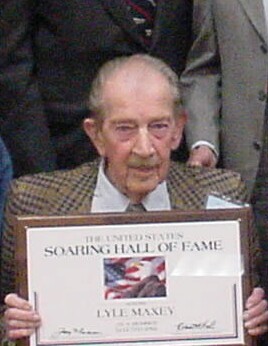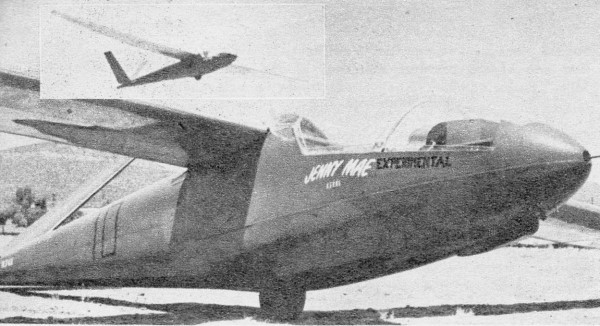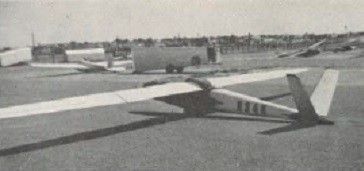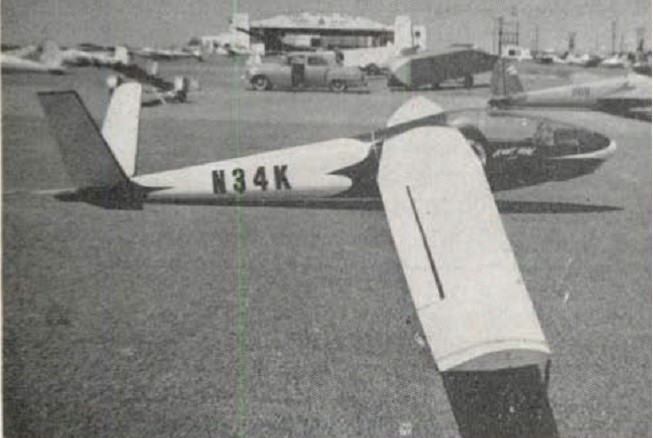Lyle Maxey
2002
about
(1919-2004) Sailplane Designer/Builder; World/National Competition; World/National Records; WWII Glider Instructor
Awards
du Pont Trophy 1956; Stroukoff Trophy 1956; Silver #30 1940; Gold #18 1947; Diamond #9 (Int #83) 1956
Bio

The day Lindbergh landed in Paris, eight-year-old Lyle decided aircraft and aviation would be his life. He flew models competitively, graduated from Detroit's elite Cass Tech High School, learned to fly with the Civilian Pilot training program and attended Lawrence Institute of Technology.
He flew gliders with the XYZ Club at Triangle Gliderport (Michigan) from 1936 through 1941. Maxey's competitive spirit was evident from the beginning. He earned his "C" badge on September 3, 1938 with a 59 minute flight at Crystal Downs, MI, flying a Franklin (NC456Y) at the site near Frankfurt, MI, where the 1938 American Open Soaring Contest took place. At his first National Soaring Contest held in Elmira, NY, in 1939, he finished second in his category. From there he kept busy competing in as many glider meets as possible, accumulating records for altitude and speed.
In 1942, Maxey was hired by the U.S. Government to train Army pilots to fly gliders at Twentynine Palms, CA. He realized the strategic importance of this work, but after several months, felt he had to get into World War II. He then bought his way out of his contracts and was able to get a commission with the Navy. He served on active duty from January 1943 through January 1946. He flew 39 combat missions in Hellcats and Corsairs in Guadalcanal, Solomons, Philippines, Indo-China and the Marianas, with 76 carrier landings.
After the war, it was back to college and sailplanes again. At the 1947 National Soaring Contest at Wichita Falls, TX he set a Goal-and-Return record in a multi-place glider. In 1948, he graduated from the University of Michigan with a B.S. in Aeronautical Engineering in June, married his wife in July, and went to work for Northrop in August, settling in Playa del Rey, CA. In the 1950s, he relocated to Dana Point and later to Laguna Niguel, where he resided until 2003.
Living in California, Maxey then collaborated with the late Irving Prue and set out to design and build his dream glider. It was called the Jenny Mae and was full of innovations. It featured a three-piece wing, making it easier to disassemble and transport. The wing featured very high wing loading, had a high glide ratio and crash-worthy cockpit. It would be the world's first high performance sailplane. He flew the Jenny Mae to a world record 500 kilometer Goal and Return in 1955. (500.020 km; 310.7 mi.)

The following year everything came together in the 1956 Nationals at Grand Prairie, TX. He took the lead the first day and kept it throughout. His final score exceeded the runners up by 13 percent. Since then, only three pilots have won the Nationals by such a wide margin.
Today's competition sailplanes still use many design elements from Maxey's break through design, the Jenny Mae.
Maxey was awarded the du Pont Trophy (1956), the Stroukoff Trophy (1956) and finally realized his dream and received his Diamond Badge, only the ninth issued in the United States - International #83 - in 1956. He competed in the 1958 World Championships in Poland where he flew in a borrowed sailplane to ninth place in a field of 37 as top American finisher. Maxey ended his competitive soaring career at the 1967 Nationals in Marfa, TX with his crew chief and nephew, Lyle D. Maxey.
In addition to the above mentioned trophies, Lyle earned Silver #30 in 1940, Gold #18 in 1947 and, as mentioned above, the Diamond in 1956.
In honoring Lyle Maxey, the Society said, "It is his passion in airframe designs that led him to the forefront of sailplane design activity in the early post WW II years. The Jenny Mae, quite modern in her day, was the culmination of his creativity and design."


Adapted from Hall of Fame nomination by Jack Wyman